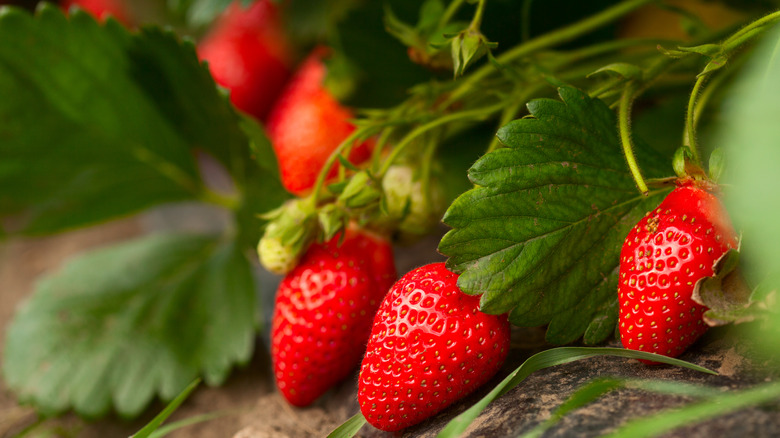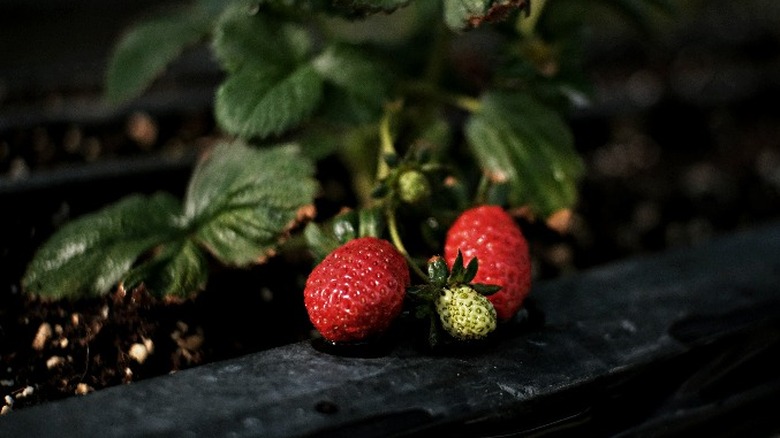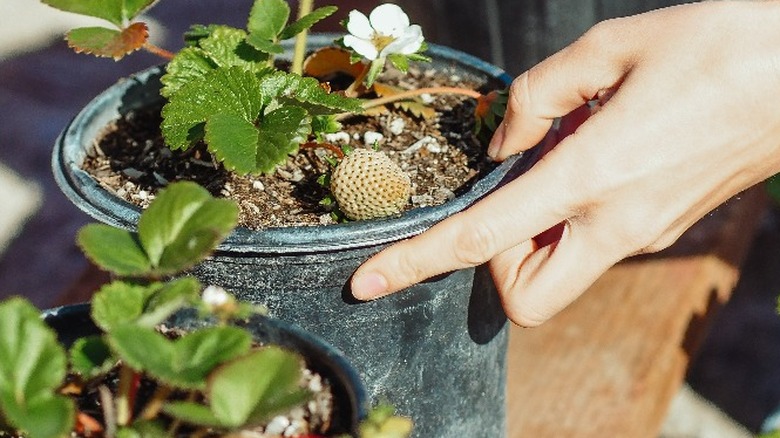Why Your Strawberry Leaves Are Turning Brown And What To Do About It
Strawberry plants are among the best fruiting options to grow from home if you're unfamiliar with growing produce. They can thrive in small containers outdoors or indoors, and they require little maintenance throughout the growing season. Yet, like with any other garden plant, they're susceptible to a variety of issues that may cause dying foliage as well as poor fruit or plant death. Often, the first sign of a problem with your strawberry plants is leaf browning or yellowing.
If you notice the leaves of your strawberry plant turning brown or yellow, this could indicate something as small as too little water or too much direct sunlight. Or, it may tell you that your plants won't be viable for the season due to something like disease. If you've noticed some unusual leaf browning on your strawberry's foliage, it's best that you look into it right away. With some sleuthing and a couple of changes to your plant's routine, you may still be able to enjoy delightful fresh strawberries come harvest time.
The potential causes of brown strawberry leaves
When you're unfamiliar with caring for fruit-bearing garden plants like strawberries, your browning leaves may not be too hard to fix. Odds are, an inadequate watering schedule is probably the issue. When strawberry plants are overwatered to the point that their soil is soggy, it can cause them to start dying.
Poor soil drainage or no drainage due to the container you're using may make the problem worse as well. On the other hand, if you're watering your plants too little, it can cause similar symptoms from dehydration. It's also possible that you're simply watering at the wrong time of day. For example, if you're giving your plants water during the hottest part of the day, it'll evaporate before your strawberries can drink it all up.
While watering issues are a frequent foe of strawberry plants, there are a few other causes of browning leaves. Nutrient deficiency in the soil, particularly of nitrogen, is one of them. But, thankfully, it's usually a quick fix. What's more difficult, and sometimes impossible to remedy, is disease. Strawberry plants are prone to leaf spot, leaf blight, verticillium wilt, powdery mildew, and leaf scorch.
How to combat these common issues
When you see that your strawberry plant's leaves are browning, but you're not sure how to identify the problem, you should consider your watering schedule first. If your soil is very wet, check if the pot's drainage hole is blocked. Alternatively, if the soil looks quite dry, you can stick your finger into the dirt to see if it's also dry below. Your strawberry's soil should be consistently moist, but not wet. Adapt your watering schedule to your plant's needs. Try watering dry plants before the sun fully rises or once it's about to go down and harvest your strawberries as they ripen.
This said, the source of your strawberry plant's browning leaves might have nothing to do with the water you're providing. If you've eliminated your watering schedule as a possible cause, the quality of your soil could be the culprit. Nitrogen-deficient soil commonly leads to yellowing, stunted growth, and premature leaf death. To fix the problem, simply amend your soil with natural fertilizer or compost.
As for strawberry plant disease, precautionary action is often necessary. It's best to look for signs of it, like browning leaves, lesions, and spots, on plantlings at the store. Plenty of common strawberry diseases are untreatable, so it's best to steer clear of them from the get-go. Luckily, scientists have created several disease-resistant varieties of strawberries that you can buy at most garden centers. Cultivars such as Surecrop, Allstar, and Honeoye are all good options that are resistant or tolerant to most foliage diseases.


